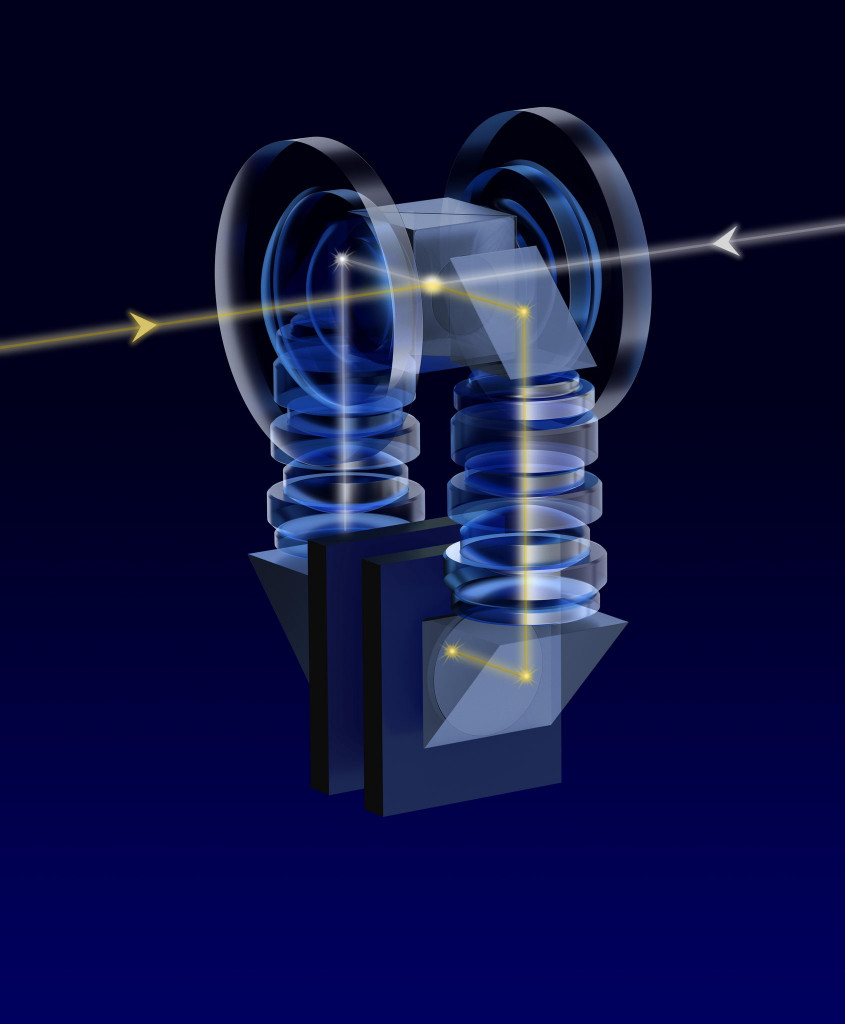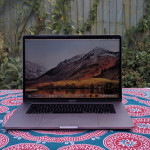
The CP+ 2019 trade show in Yokohama, Japan gave us the chance to meet a variety of senior executives from all the major camera makers. We spoke to a group of senior figures from Ricoh about the full cross-section of the company’s photographic range, with the answers mainly coming from:
- Hiroki Sugahara – General Manager, Marketing Communication Department
- Hiraku Kawauchi – Group Leader, PR, Marketing Communication Department
Please note that this interview was conducted partly via an interpreter, and has been edited for clarity and flow.
What has the response to the GR III been like, so far?
Very positive. This is not the first time we’ve disclosed the appearance and specifications, but this is the very first chance our customers have had to touch and use it. Even though they know the specifications, the purpose to come here is to touch and try, for example to experience the operability of the touchscreen or the performance of the macro capabilities.
From what I’ve seen and heard, the reaction is very good. Especially the operability of the touchscreen, which customers consider a positive. The shake reduction, the 24MP sensor or performance of the lens are features that our customers already knew from the specification sheet. But the quick response of the touchscreen seems very well accepted.
What was the logic behind the decision to use a unit-focus design for the GR III’s lens (that tends to slow down autofocus)?
The big priority is to make the camera body as compact as possible while retaining good resolving power of the lens.
Does the switch to phase-detection bring enough of a speed increase to overcome the challenge of moving a comparative heavy lens design?
The speed of the focusing is improved. But we’d also like to draw attention to the fact that you can now focus from 10cm to infinity, rather than 30cm to infinity, as on GR II. That range of scanning is broadened. This can sometimes give the impression of slower focus but the overall speed is faster than with GR II.
Is there room in your lineup for a sister model that isn’t 28mm, or maybe other adapter lenses?
One thing is for sure, we haven’t only made 28mm lenses: we did have a 21mm GR lens in the past, and we did have a 50mm equivalent [module] for the GXR. I feel this is also interesting: to have a sister model with other focal lengths.
But the important thing with this camera was that it should be fast enough and compact enough to be considered ‘GR.’ If we could achieve that with other focal lengths, that would be interesting.
Ricoh currently makes a wide range of products: Pentax DSLRs, the GR and WG compacts and the Theta series, are there any other niches you see existing or do you think there’s room to grow within these four areas?
On top of this we have 645Z, so already we have enough formats. We’re currently working on these categories of products.
We’ve seen a lot of movement away from DSLR to Mirrorless (by manufacturers), do you feel there are still types of photography better-suited to DSLR?
Currently mirrorless, especially full-frame mirrorless, is a movement. So many users are interested in this new category of camera: full-frame mirrorless. Mirrorless itself has its own benefits [and] appealing point to the users: they can check their images before hitting the shutter button, through the EVF. But on the other hand, DSLRs have their own benefits: users can enjoy the beautiful image through the optical viewfinder and then imagine different ways of taking photos using different settings, they can imagine the consequence of taking the picture.
We have been studying various possibilities when it comes to development, but we believe both mirrorless and DSLR have their own appeal. I imagine, in two or three years, some users who bought mirrorless cameras will return to DSLRs or choose to use both systems, because each has its own benefits.
How do you prioritize which lenses to work on next, for K-mount? When do you plan a completely new lens, when do you replace an existing one?
We have a lineup with many lenses, particularly APS-C optimized lenses. Actually, in the industry, our number of APS-C-optimized lenses is number one. Our DA lens series and also the ‘Limited’ series of lenses, which gives a unique level of image quality for the enthusiast photographer. We also have the star lenses: we’re going to develop an 85mm F1.4 lens, so we are releasing very high quality lenses. And also APS-C optimized lenses like the 11-18mm F2.8. We will continue to release various series.
In spring, we released the 35mm F2 HD-coated lens, which is a modification of a conventional lens, so we’ll continue to do this kind of modification as well.
You mentioned the 645Z. We’re still seeing cameras launched with a similar sensor, many years after you did, so we understand it has a longer lifespan, but is that series still part of your plans?
Of course. We are continuing to develop the 645 series. We are pursuing higher picture quality for the system because users have high expectations of image quality.
[The representatives would not be drawn over whether these efforts were focused on better lenses or increased pixel counts]
When you’re designing a lens, do you see any tensions between needs of stills and video requirements? How do you strike that balance?
The overall priority is still image quality, but we do have the 55-300mm lens, which is designed to work well with the movie feature by including electromagnetic aperture control. So we continue to care about the movie performance as we design new lenses.
What were the challenges of including larger sensors in a Theta – for the previous generation there were concerns about being able to offer 4K, now you’ve done it with bigger systems.
It’s partly down to our heat management system: we use a metal body in the Theta Z1 unlike the Theta V, which had a plastic body. The Z1 uses a magnesium alloy, which is a better heat conductor, so we can manage the heat well.
In terms of space, first of all, we had to change the size. We also use three pairs of prisms, rather than two pairs: we changed the position of the sensor and how we bend the light to them.

The larger sensor requires a longer focal length. There was the risk that using more prisms would lower the image quality but the design we came up with performs very well.
The body has got slightly thicker, did you need a wider angle-of-view to give plenty of overlap between the two cameras?
The angle-of-view is actually the same, but the minimum focus distance has increased. It’s now 40cm instead of 10cm. The angle-of-view was already more than 180 degrees, so we didn’t have to make it wider to give sufficient overlap.
What do you think is the most exciting new feature of the Z1?
We focused a lot on the image quality, to make it much, much better than previously possible. We really wanted to make sure that people used to DSLR image quality and professionals could use the Theta. We wanted to ensure it was suitable for creative and professional use.
Who is using Theta and what for?
There are two groups: consumers and business users. Some people are enjoying taking 360 degree images, editing and posting to Instagram. Currently our users are enjoying taking the video 4K 360 image and converting it to a 2D image: the editing software lets them choose the angle, or zoom in or out and post to sites such as YouTube. This is often in the same situations where you might use an action camera, like a GoPro.
Also, we see an equal number of users traveling and taking a 360 video image with a selfie stick, at a viewpoint, for instance. Then, when they get home, they can enjoy the memory of their travel, with a VR image. That’s [a typical consumer use-case].
In terms of business, it’s especially the real estate and second-hand car sales areas, and also in construction and inspection. There are many business users who can utilize this 360 image for recording or communicating a specific situation or image.
Is there some overlap between this and the G-series of industrial camera?
The G-series are waterproof cameras: They’re normal cameras, essentially. For an all-around image, the Theta is the better option: it brings additional possibilities. Those business-to-business customers will certainly benefit from the improved image quality of the Z1. They don’t need more video quality, necessarily, but they need the higher still image quality.
What is the unifying feature or quality that Ricoh brings to customers of GR, WG, 645, K and Theta?
We’re trying to make the operating system the same, the G-series, the GR series, WG and DSLRs are coming together. Even though the brands are different, the way of handling the camera is becoming more similar. Of course Theta is something different.
Are there any lessons you’ve learned from Theta that you can apply to your other cameras?
Our current Wi-Fi software is now essentially the same as it is in Theta. We have a specialized Wi-Fi app for GR, but we are looking to bring them together and introduce the same Wi-Fi software for GR, Theta and DSLR.
Also, we already use DNG Raw so that they’re compatible with Adobe Lightroom. But we also have stitching plugins for Lightroom that will stitch multiple images. This will have the same algorithm as the Theta, for stitching. But by making it in a plugin for Lightroom, professional photographers will already be familiar with the environment: their workflow doesn’t have to change.
Editor’s note:
As you might expect, a lot of Ricoh’s attention at present is on the GR III but this interview really brought home to me how much work’s gone into the Theta Z1. Ricoh always says the Theta has been a real success for them, and it’s certainly a distinctive product in a way you don’t often encounter in the photo industry.
But, while all the models have looked very similar, Ricoh has been constantly pushing what’s possible in terms of managing what they do with the space and all the heat within that same form-factor. Having previously been told how difficult it was going to be to process 4K video in such a small space without overheating, it seems amazing to find they’re now doing it with even larger sensors filling up the space.
This may not seem that exciting for users of the company’s Pentax DSLRs, but it can only be positive if a company has a product that pushes them to constantly work on processing efficiency, space optimization and thermal management, because those are skills that can underpin interesting cameras in the future.
Which is probably why I was pretty disappointed to hear Ricoh’s representatives appearing to suggest that DSLRs might make a comeback, once the novelty of mirrorless has worn off. Because, while I don’t think the DSLR is dead just yet, I wouldn’t bank on it ending up with much more than niche status in the long run. But perhaps Ricoh believes it can make a solid future by exploiting multiple small niches like this: that would certainly explain the amazing breadth of its product portfolio.
A part of me can’t help but feel a bit disappointed. Pentax was one of the first companies, way back in 1997, to show a concept mockup of what we’d now call a mirrorless camera. And, even though the market is now very crowded, I can’t help imagine what a combination of this foresight, and the impressive engineering of the Theta Z1 would look like, if they could be brought together.
Source: dpreview.com









































